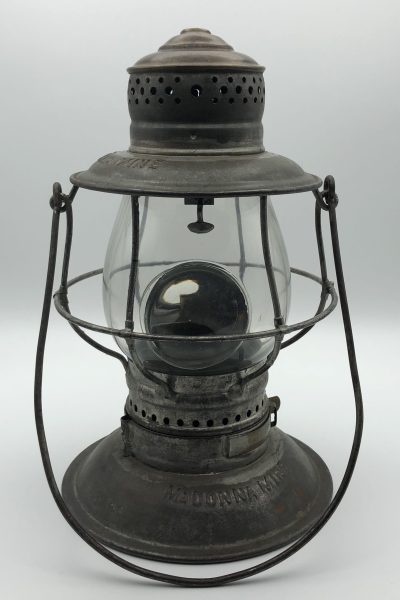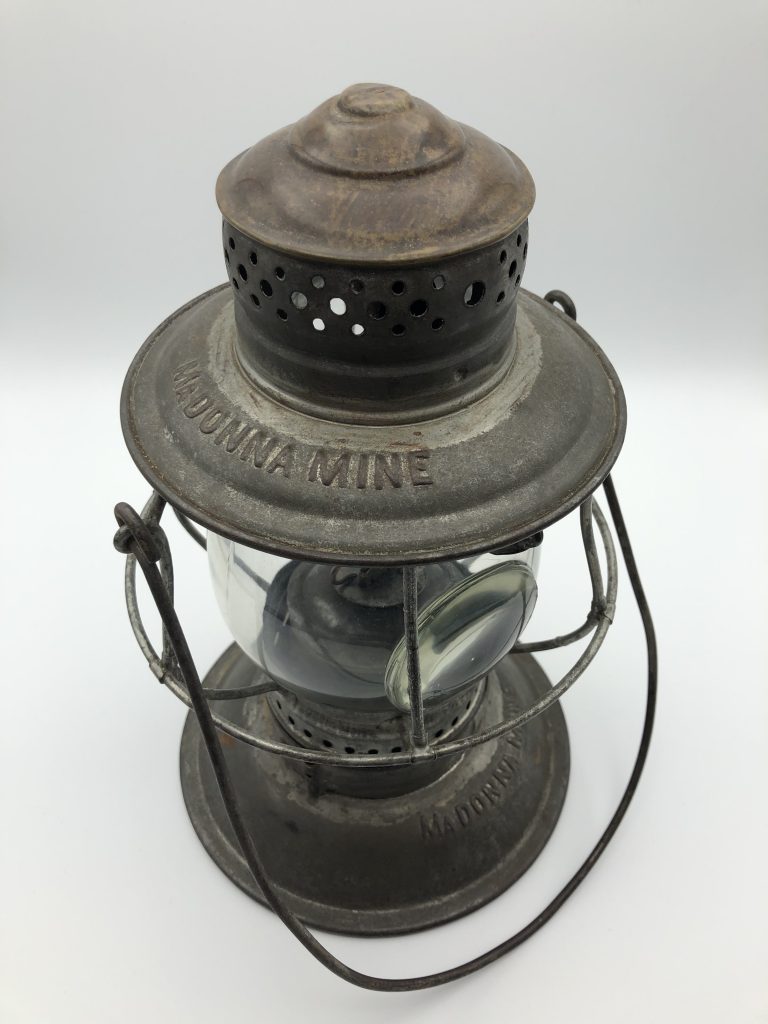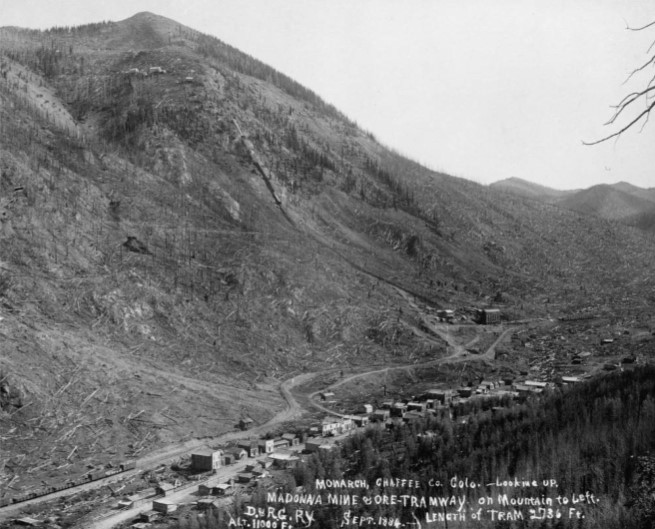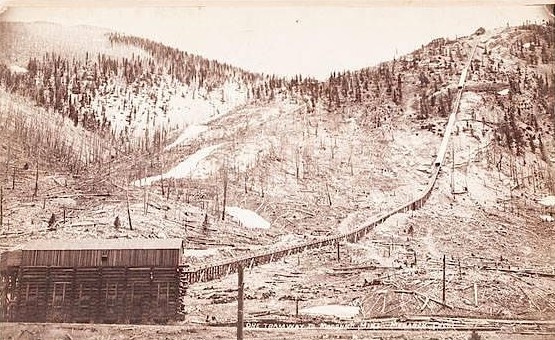MaDONNA MINE

The Lantern: M.M. Buck Model 1880 brasstop bell bottom, fixed globe retainer, double marked “MaDONNA MINE”. M.M. Buck hallmark on the bell bottom strap.
The context: Chaffe City, Colorado, located at an elevation of 10,751 feet, was a hot bed of mining activity that contributed significant carload traffic to the narrow gauge Denver and Rio Grande Railway (D&RGRy).
A prospector, NC Creed of Creede, CO, fame, first discovered ore here in 1878. Within months the city’s population had grown to 3,000 people. By 1884 the city’s name had been changed to “Monarch” and it had become one of Colorado’s typical picturesque booming mining towns.

The town, nestled between two mountains on a high pass, consisted of commercial buildings built with typical false-front western architecture, over 100 houses, three hotels, saloons, and gambling halls. The dirt streets were populated with your typical cast of shopkeepers, business men, rugged miners, numerous individuals of questionable moral character, and of course the sheriff. The adjacent hills were covered with felled timber that was used for building construction and support in the mine shafts.

The Madonna Mine, founded in 1883, had an ore tipple located above the main street on the lower hillside that was served by the D&RGRy. The smelter shipped up to 30 cars a day to the Colorado Smelter (Operated from 1883 until 1908) located in Pueblo, CO. The ore tipple was served by a 2,736-foot tram railroad that stretched up the mountain side to the mine shafts.

By 1893, due to the price decrease in silver, the boom went bust and Monarch met the same fate as many other Colorado mining towns; the population leaving in droves. The Madonna Mine was later purchased by the Colorado Smelter and turned into an open pit limestone quarry. The limestone quarry would continue as the sole customer on the Denver and Rio Grande’s (D&RGRR) and later Denver and Rio Grande Western’s (D&RGW) Monarch Branch, famous for its numerous switchbacks and steep grades.
For additional reading and some great photographs, we highly recommend “Trails among the Columbine: the Monarch Branch of the Denver & Rio Grande Railway” published by Sundance Publications in 1994.
